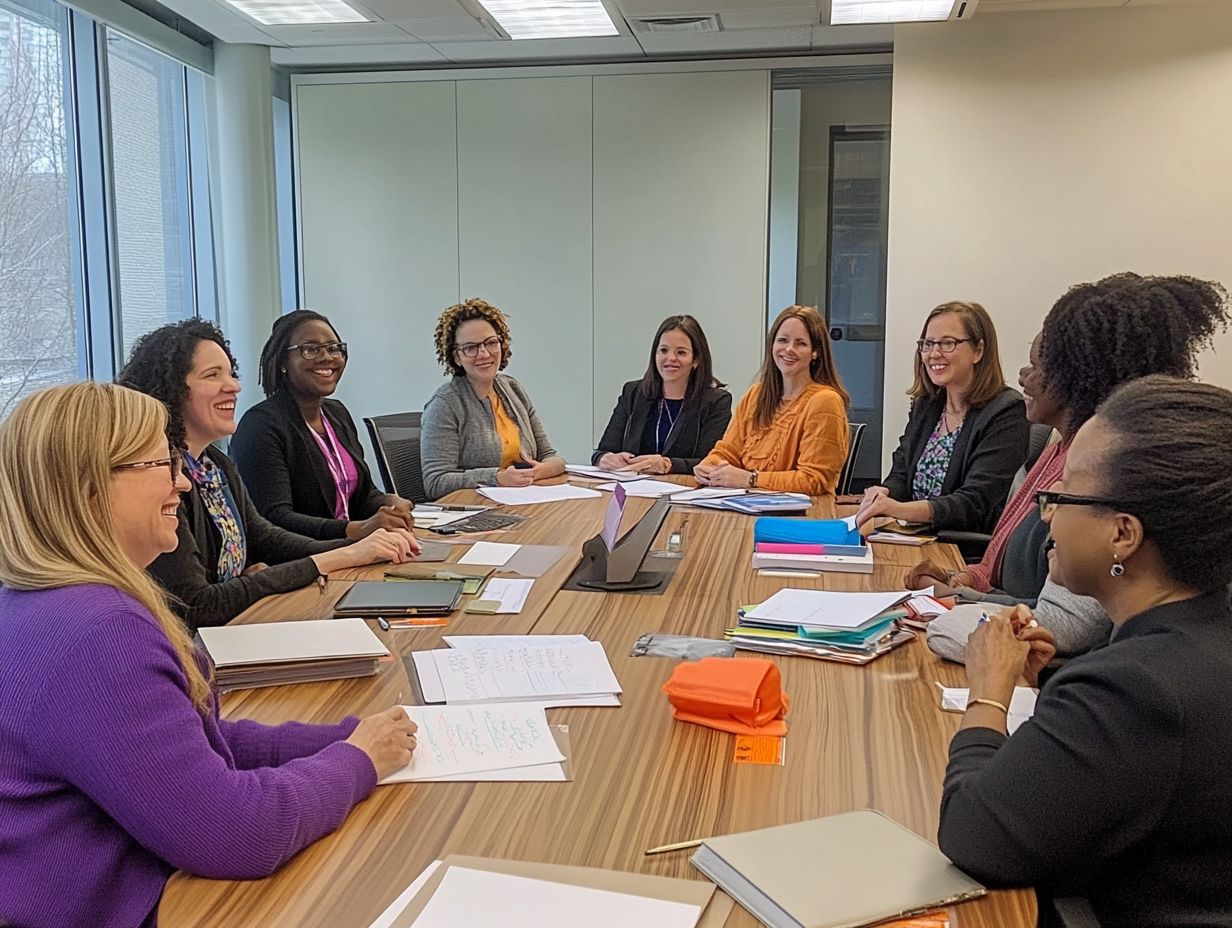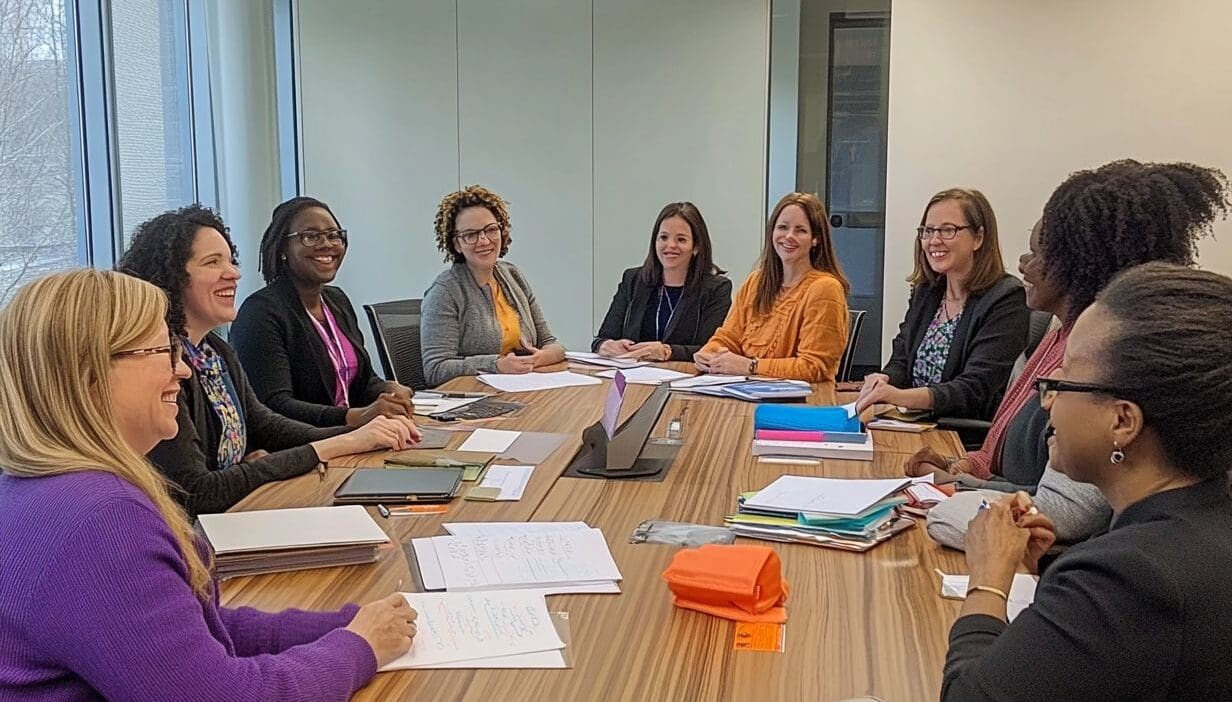In today’s fast-paced work environment, effective meetings are essential for fostering collaboration and achieving results. However, many employees often perceive them as unproductive time sinks, leading to widespread dread regarding their necessity. This article examines the significance of meeting attendance and how well-structured meetings can enhance team motivation and meeting participation. It addresses the factors influencing attendance, identifies common pitfalls to avoid, and outlines strategies for developing compelling agendas. Furthermore, it discusses interactive techniques that maintain participant engagement, emphasizes the importance of follow-up communication, and explores methods for measuring meeting success. This guide aims to equip professionals with the knowledge to conduct meetings that are both effective and desirable for attendees.
Key Takeaways:
Why Meeting Attendance Matters

Meeting attendance is a vital component of effective organizational communication, as it has a direct impact on decision-making processes and the overall outcomes of meetings.
High attendance levels typically signify that stakeholders, including CEOs and team members, recognize and appreciate the significance of the meeting’s content and objectives.
Engaging participants in discussions promotes collaborative brainstorming, which can result in innovative ideas and solutions, thereby enhancing the meeting efficiency.
When meeting attendees are present, they have the opportunity to share insights, align on key action items, and assess the repercussions of decisions made during the meeting, ensuring that all perspectives are acknowledged and valued. ResearchGate highlights how the critical importance of meetings to leadership and organizational success underpins these dynamics.
The Impact of Engaging Meetings
Engaging meetings are essential for promoting effective participation, where clear and concise communication enables meeting attendees to contribute meaningfully and enhances the overall success of the meeting.
When participants feel valued and encouraged to express their viewpoints, it cultivates an environment conducive to vibrant discussions that can lead to innovative solutions. Techniques such as round-robin sharing and the use of open-ended questions can stimulate interaction and ensure that diverse perspectives are represented.
Creating a safe environment for the free exchange of ideas and brainstorming without judgment is imperative. This approach not only enhances creativity but also allows teams to collaboratively refine concepts, thereby streamlining the decision-making process.
In conclusion, employing effective communication techniques has the potential to transform an uninspired meeting into a dynamic forum for discussion, ultimately leading to impactful outcomes. For those interested in a comprehensive overview of effective meeting strategies, this guide by the American Psychological Association covers key methods to lead successful meetings.
Factors that Influence Meeting Attendance
Understanding the factors that influence meeting attendance is crucial for organizations seeking to enhance meeting efficiency and ensure effective meeting participation. As noted in a recent analysis by Harvard Business Review, employee motivation is a key determinant of whether attendees feel compelled to attend meetings and their overall commitment to meeting expectations. Various factors, including the perceived value of the meeting agenda, the influence of leadership, and the prevailing organizational culture, can significantly impact attendance rates.
Understanding Employee Motivation and Meeting Expectations

Employee motivation serves as a crucial factor in determining whether team members feel incentivized to attend meetings, as it is often closely linked to the perceived purpose of the meeting.
When employees recognize that their personal goals and aspirations align with the objectives of the meeting purpose, they are more inclined to prioritize their attendance. This alignment not only enhances individual engagement but also cultivates a collaborative environment in which team members feel valued and invested in collective success.
Implementing strategies such as transparent communication, feedback mechanisms, and recognition of achievements can significantly strengthen this alignment. When leaders actively involve employees in the agenda-setting process, it fosters a genuine sense of ownership that translates into increased participation rates and, ultimately, contributes to a more productive organizational culture.
Common Meeting Pitfalls to Avoid
Avoiding common pitfalls in meetings is essential for enhancing effective participation and ensuring that the time invested yields productive outcomes.
While participants may arrive with a strong desire to collaborate, the presence of unclear agendas can often derail discussions, leaving attendees uncertain about their roles and objectives.
This lack of structure may lead to disengagement, as participants might feel that their contributions are neither meaningful nor necessary.
Furthermore, without precise communication, crucial points can be overshadowed by extraneous details, resulting in frustration and wasted time.
To address these challenges, it is imperative to prepare a clear agenda in advance of each meeting, engage participants through open-ended questions, and effectively summarize key takeaways.
By implementing these strategies, organizations can significantly enhance engagement and clarity, ultimately maximizing the productivity of their meetings.
Creating a Meeting Agenda
Developing a well-structured meeting agenda is crucial for ensuring that all participants comprehend the purpose of the meeting and the key elements that require discussion and attention.
A comprehensive agenda should encompass clearly defined objectives, a list of action items, and allocated timeframes for each topic to facilitate effective discussion and decision-making.
This level of organization aids in maintaining the focus of meetings and optimizing participant engagement.
Key Elements of a Successful Agenda

A successful meeting agenda encompasses key elements that promote effective decision-making and facilitate clear communication among participants.
When organizing a meeting, it is essential to articulate the purpose clearly, as this establishes the tone and objectives for the entire discussion. Identifying relevant topics ensures comprehensive coverage of all critical areas, thereby promoting a thorough examination of issues.
Additionally, allocating appropriate time for each topic is crucial; it allows for balanced discussions while respecting the schedules of all participants. Thoughtfully selecting attendees fosters diverse perspectives and enhances collaborative problem-solving.
Each of these components significantly contributes to guiding discussions toward clear outcomes, ultimately ensuring that the meeting achieves its intended results efficiently.
Engaging Meeting Strategies
Implementing effective meeting strategies is essential for facilitating meaningful discussions and encouraging participants to generate ideas that contribute to innovative solutions.
Interactive Activities and Techniques
Incorporating interactive activities and techniques into meetings can significantly enhance participant engagement and improve the overall effectiveness of discussions.
For instance, the use of breakout sessions allows attendees to participate in small group conversations, fostering a more intimate atmosphere conducive to brainstorming.
Additionally, polls can be seamlessly integrated throughout the agenda to gauge opinions and ensure that every participant’s voice is heard, thereby promoting inclusivity.
Utilizing collaborative tools, such as shared documents or virtual whiteboards, enables participants to contribute in real-time, thereby driving engagement and creativity. These approaches not only encourage active involvement but also facilitate more well-considered choices, resulting in well-rounded meeting outcomes that benefit the entire team.
Following Up After the Meeting

Following up after a meeting is a critical practice for ensuring effective communication and accountability concerning the action items discussed during the session.
This process reinforces the outcomes of the meeting and allows for the assessment of the impact of decisions made, while also clarifying any points that may require further elaboration.
A well-structured follow-up can significantly enhance the overall effectiveness of future meetings and track impact.
Effective Communication and Action Items
Effective communication is essential for ensuring that action items identified during meetings are clearly understood and assigned to the appropriate meeting roles.
This requires articulating tasks in a straightforward manner, enabling all participants to comprehend their responsibilities without ambiguity. Assigning clear deadlines for each task is equally important, as it establishes expectations and helps maintain momentum during the execution phase.
To enhance this process, employing tools such as shared project management platforms can improve accountability by providing visible tracking of progress. Regular follow-up on these action items fosters a culture of responsibility and encourages collaboration, ultimately enabling teams to achieve their goals efficiently and effectively.
Measuring Success of Meetings
Measuring the success of meetings is essential for assessing their effectiveness and implementing necessary adjustments to enhance future sessions.
By establishing specific metrics, organizations can evaluate meeting outcomes, monitor their impact, facilitate discussion, and identify areas for improvement.
These metrics may encompass attendee engagement levels, the completion of action items, and feedback from participants, all of which play a critical role in evaluating the overall effectiveness of meetings and decision making.
Metrics for Evaluating Meeting Effectiveness
Establishing metrics for evaluating meeting effectiveness is essential for understanding participant engagement and the overall impact of meetings on organizational objectives, including the secondary impact.
By examining specific criteria such as attendee participation rates, the successful completion of action items, and qualitative feedback, organizations can develop a clearer understanding of how meetings contribute to their strategic goals, as well as gather input.
These metrics serve as critical indicators, providing insights into participant engagement with the content and determining whether meetings cultivate an environment conducive to productive discussion, such as in a workshop. Feedback from attendees can identify areas for improvement, ensuring that future gatherings are more efficient and focused, following key meeting principles.
By employing these key metrics, organizations can refine their meeting structures to enhance communication, encourage active participation, and ultimately achieve more favorable outcomes, similar to practices at Amazon and Google.



